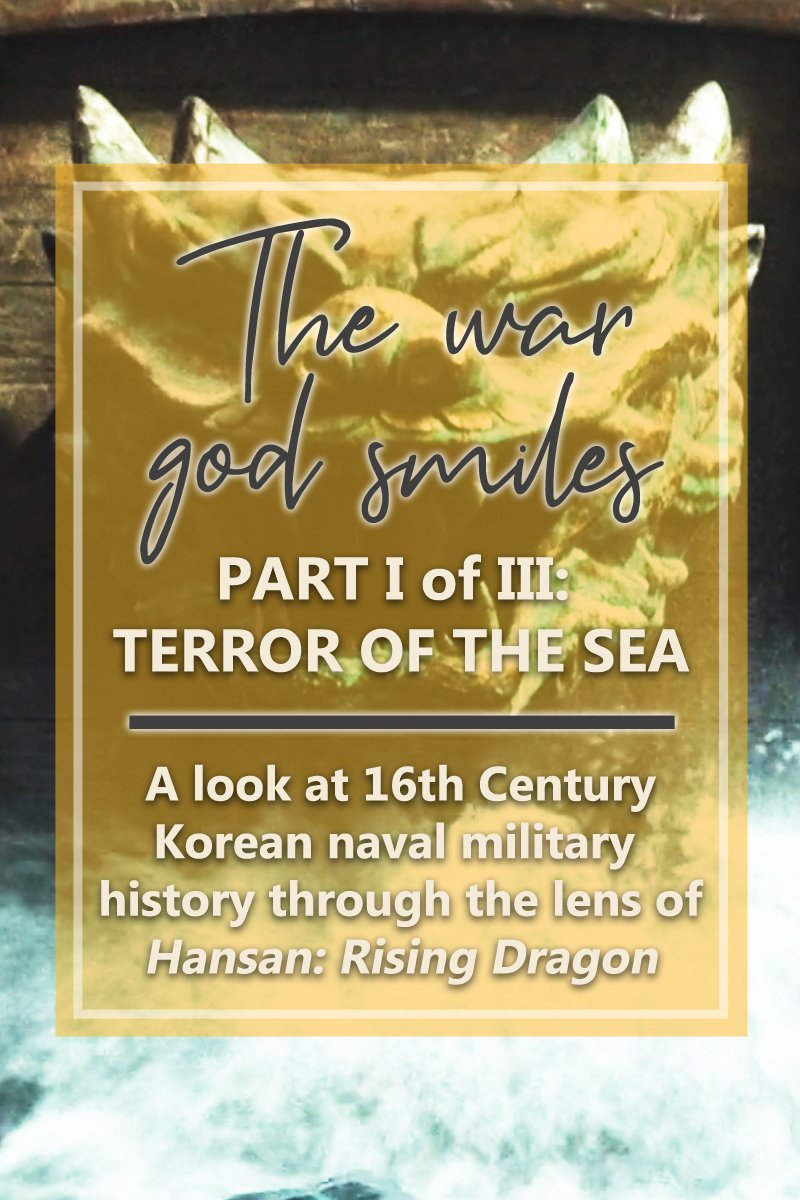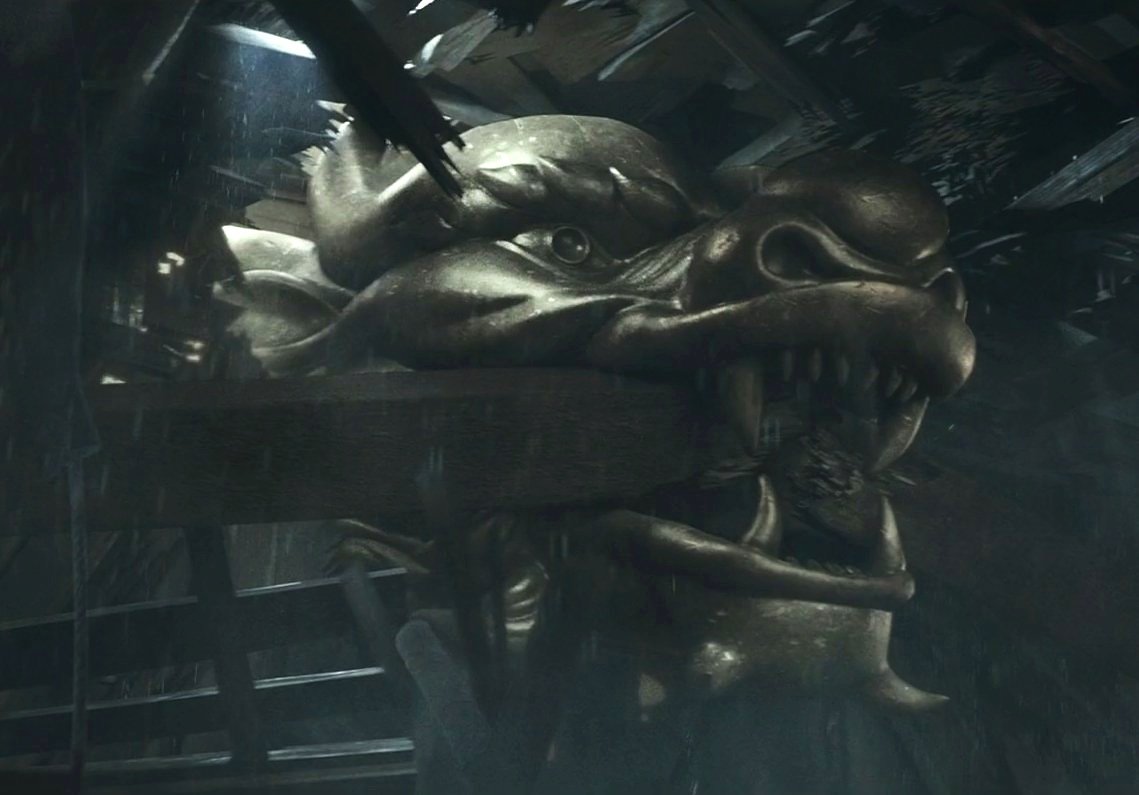INTRODUCTION
Over the years, Hollywood has produced many a historical movie “based on a true story” that takes the whole concept of artistic liberties too far, usually in the form of cramming an unconvincing and unwanted romance plot straight through the center of an otherwise perfectly good action film (looking right at you, Michael Bay’s Pearl Harbor).
Fortunately for the historically inquisitive, some cinematic gems come out of Asia, and the Korean Cultural Centre has afforded me the opportunity to see one of them.
Hansan: Rising Dragon isn’t just any gem though. It’s a crown jewel.
Just for context, I was born and raised in Canada, and therefore my education in history was always very Eurocentric. As a result, when I think of the late 1500s, my mind conjures images of Queen Elizabeth I, Shakespeare, and 16th Century London’s last major plague outbreak – which, funnily enough, peaked in 1592; the very same year of the main battle depicted in Hansan: Rising Dragon (한산: 용의 출현).
There are so many aspects of this film to appreciate, I had trouble choosing what to highlight here, because if I tried to write about everything I noted while watching, this would be the length of a novel (and it’s already really long. As it is, the topics I decided to concentrate on are so rich with fascinating information, this blog will be broken into three posts.
JOSEON VS JAPANESE WARSHIPS & WEAPONRY
PART I: 거북선
The movie begins with bloodied Japanese soldiers explaining to their new commander, Wakisaka Yasuharu (脇坂 安治), that in their last clash with the Koreans, Admiral Yi Sun-sin unleashed a warship so powerful and horrifying they call it “bokkaisen” (a sea monster from ancient Japanese mythology).
“Sailors worldwide, no matter the time period, are superstitious and fear creatures rising from the sea. In the west, our monster is the Kraken from Norse mythology.”
The ship is 거북선 (Geobukseon), a large, fully-enclosed battleship so deadly effective it was used by the Korean navy for five centuries, and a crucial piece in Admiral Yi Sun-sin’s halting of the Japanese invasion.
At this point in history, Japan’s primary naval strategy was to quickly ambush the enemy and grapple the ship with hooks and ladders, which allowed them to board and engage the Koreans in melee combat (a skill at which they were, by all accounts, superior). The Joseon navy created the geobukseon specifically to get up close and personal with the Japanese ships without being boarded.
Built from thick boards of pine and sitting around 120 feet from bow to stern, its enclosed top was covered in iron spikes, which not only discouraged enemy soldiers from attempting to jump aboard but also made the ship difficult to snag with a hook. It had the added benefit of protecting a complement of 50 soldiers and 70 oarsmen from explosives and arrows.
“Boats with U-shaped hulls have greater stability, but sail more slowly due to water resistance. To compensate, 거북선 and 판옥선 were designed with ~22 oars on each side, plus masts. The combination of raised sails and rowers allowed these ships to move more quickly than expected.”
Geobukseon were sturdy and difficult to sink just like their sister ship 판옥선 (Panokseon), which I’ll be discussing in Part II of this blog post. Both were made from the same two-mast structure, both were capable of turning on their own axis, and both were designed to withstand intense recoil from cannons; however, only the geobukseon was constructed with the intent to ram enemy ships with the heavy crest mounted on the bow.
So why were those soldiers from the start of the movie convinced it was a monster?
Its key defining trait (after the shell-like roof) is a huge, intimidating dragon’s head mounted atop the bow, which can fit a cannon— smallest of the Joseon-era 총통 (chongtong) cannons called 황자 (hwangja) —inside. That alone seems like enough to strike fear into the hearts of enemies, but there was still more.
On top of cannon shot, they outfitted the dragons to “breathe” dense toxic smoke created by sailors burning poisonous materials inside the head. The ensuing sulfuric cloud, pumped out by a projector, would obfuscate the geobukseon at close range while suffocating its opponents.
The nickname “目蔵船” (mekurabune), meaning “blind ship”, suddenly makes a lot more sense.
With their enemies sufficiently terrified and thrown off position, the geobukseon was then able to unleash hell with its heavy armament of 22 cannons (11 per side). I already mentioned one of Joseon’s chongtong cannons, but there were three other variations, each increasing in size and power from the last.
-
Yellow 황자총통 (hwangja-chongtong), as specified above, was smallest, and looked similar to the European hand-cannon, with a shot range of ~730m.
-
Black 현자총통 (hyeonja-chongtong) was around 50% larger than Yellow, capable of firing a projectile that was twice the weight up to 2km.
-
Earth 지자총통 (jija-chongtong), the second-largest, carried a shot weighing 16.5kg – that’s more than 36lbs! However, this heavier payload meant a shorter firing distance of about 1km.
-
Sky 천자총통 (cheonja-chongton) could be loaded with different types of ammunition, however, the most impactful was probably a 30kg— sixty-six pounds! —arrow, with an iron head and fins. Despite that impressive heft, the range was still around 1.4km.
Hansan: Rising Dragon - at a critical moment, the geobukseon lures Japanese ships close and fires all cannons at once
Personally, the thing I find the coolest about 거북선 is that they were very likely the first armored ship to ever exist. While there isn’t hard evidence to prove it was first in the world (the preservation and interpretation of information from ancient eras is imperfect), it was for sure one of the only pre-industrial warships to use protective iron plating.
I enjoyed everything about Hansan: Rising Dragon so much that I went down a bit of a rabbit hole reading about Korea’s naval military history to ensure I understood everything about the movie, and I’ve only just scratched the surface. I can’t wait to continue.
In the next part of this blog series, I’ll be outlining the differences between 판옥선 (Panokseon) and its Japanese equivalent 安宅船 (Atakebune), and how Admiral Yi Sun-sin used these differences to defeat the numerically superior fleet at the Battle of Hansan.
I hope in reading these posts you learn something new and gain an appreciation for how much amazing stuff has happened throughout human history.
You can find the original post here






